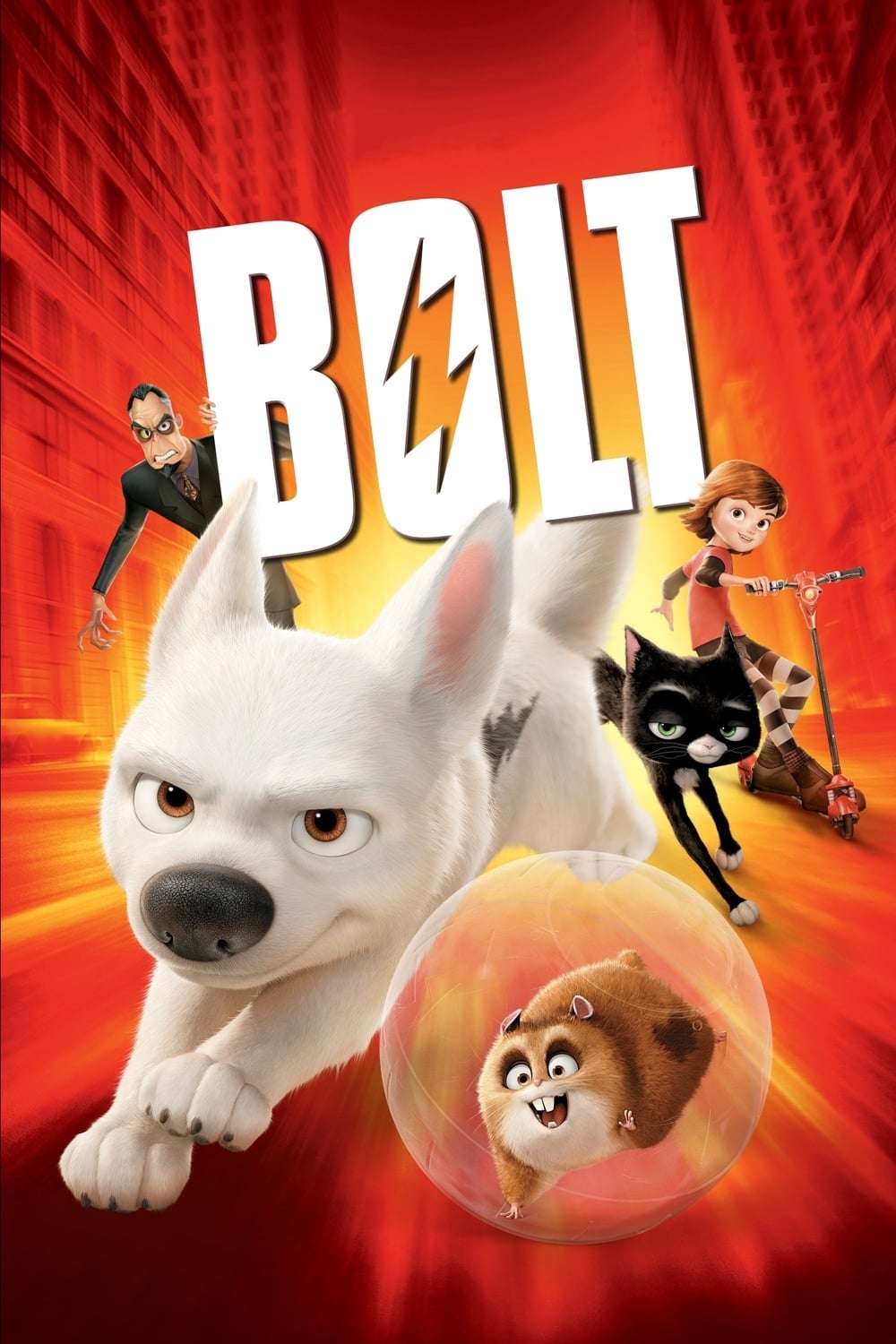
Bolt is the star of the biggest show in Hollywood. The only problem is, he thinks it's real. After he's accidentally shipped to New York City and separated from Penny, his beloved co-star and owner, Bolt must harness all his "super powers" to find a way home.
23 Nov Bolt (2008)
Locked Door
This is a children‘s film in the modern mould. That means it has to have cinematic values that affect and impress, and at the same time sport an acceptable message. Usually it about the value of family and finding self; here it is both. That means that these films have a built in bicameral tension, one foot in the future, danger, adventure and the other in manufactured notions of domestic comfort.
Regular readers know that I am a student of folded narrative, a simple example being what we have here: a film world within a filmed “real world.” There are all sorts of narrative advantages that result from this device and they seem to work better when the film is animated. Something about acknowledged abstraction. The tip-off is in the first seconds where you see that the girl is redheaded.
Supposing you can tolerate or are immune to the dangerous “message,” this will be great fun.
There’s a sort of metastory here, like that one of fifty years ago when Disney changed the nature of cinema everywhere. Here it is Pixar — and specifically John Lassiter, changing film AND Disney.
Pixar has three signatures; you can see them all here plus a quote.
The first is the obvious: the ability to render and move three dimensional characters in ways that more acutely convey the dramatic effects. All of these ways have their origin in ordinary theatre well before film. But here they are engineered to be conveyed in ways impossible with real humans.
Pixar was the first and for a long time the only animation studio to actually worry about the story. Disney now in this does as well.
Pixar still is the gold standard for experimenting with the use of space. I mean that both in the sense of framing the scene physically and with the camera. The combination of the two is especially advanced. As with the acting, the goal is to do things that work and enhance the goals of the narrative, but which are not physically possible with “real” sets and cameras. You can see that used here, especially in the movie-within chase scenes at the beginning, which notably are more extreme than the rest in all three of these values.
Quite apart from the general Pixar influence, you can see it in each of the three script teams.
The basic script team owns the story with the pretty sophisticated notions of folding and redheads.
The comic script team owns the gerbil. He’s probably a quarter of the film and 80% of the laughs. You can see his importance in the folding as well: when you do something as here (where one character is “bolted” in/into two folds), you need to have an observer who similarly spans the two. Hence the gerbil. But then he was turned over to the comic team.
You can also see the influence of a third team, which I am sure came from Pixar. They own the pigeons. There are three main groups of three, plus others scattered around. Their rendering and motion can be traced all the way back to “For the Birds.” All their jokes are Pixar in-jokes. All their mannerisms are more nuanced, and I imagine that they were actually used in educating the Disney crowd. In true self-referential style, they left references in.
For instance, when we first meet some pigeons we see the theatrical personalities in their head cocking. Then they talk about it and instruct Bolt in how to hold his head (to extricate from a fence). Later, we see a similar tutorial from the cat to the same character for begging. Students of animation will know this as an exercise to move Disney away from their similar keynote scene in “Lady and the Tranp” of 50 years ago.
There’s the Nemo joke, tied to aliens and when we first see aliens in the “new” film within, it uses a shot taken, yes, from Nemo which in turn is patterned after Ridley Scott’s film. Not “Alien” exactly but “Bladerunner.”
Check out how the “moviewriter” pigeons send one off to get whole grain (which is not whole wheat) and how that is mirrored in the all-important introduction of Mittens.
Posted in 2009
Ted’s Evaluation — 3 of 3: Worth watching.


No Comments